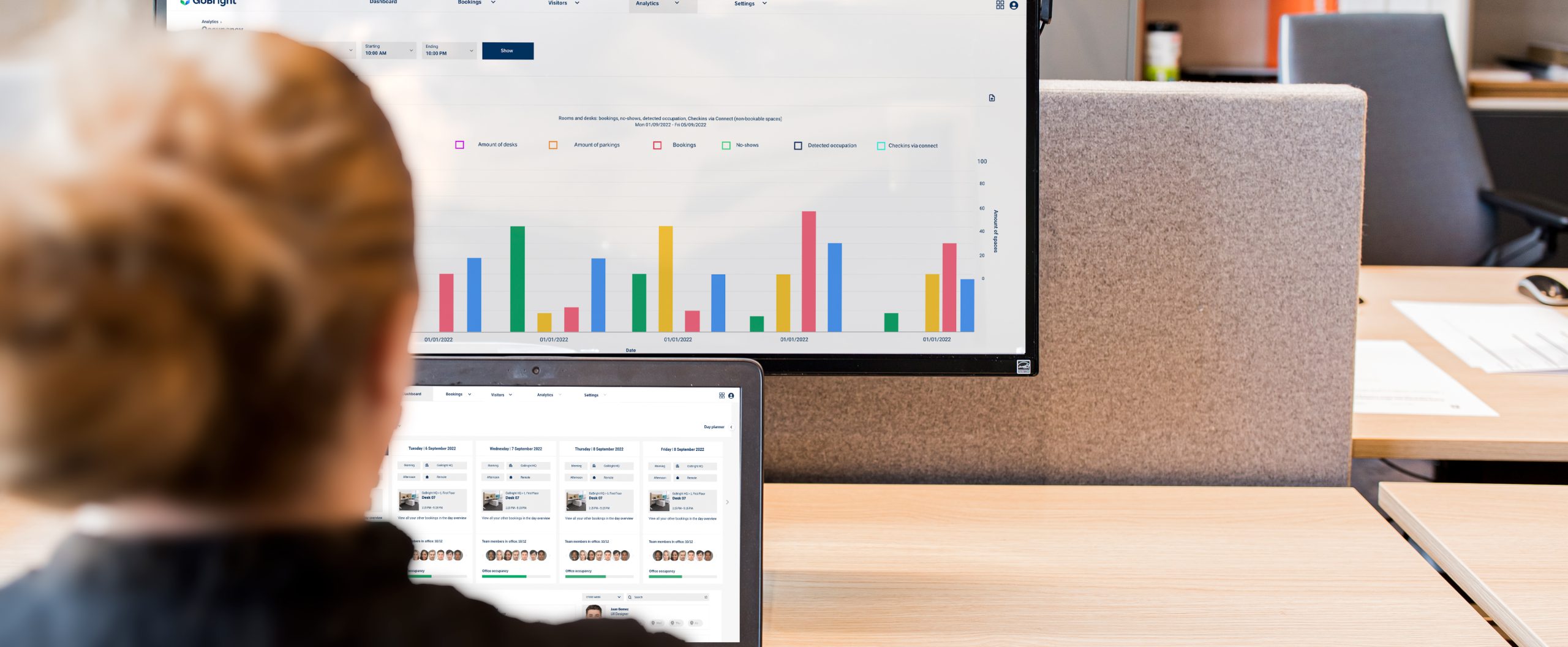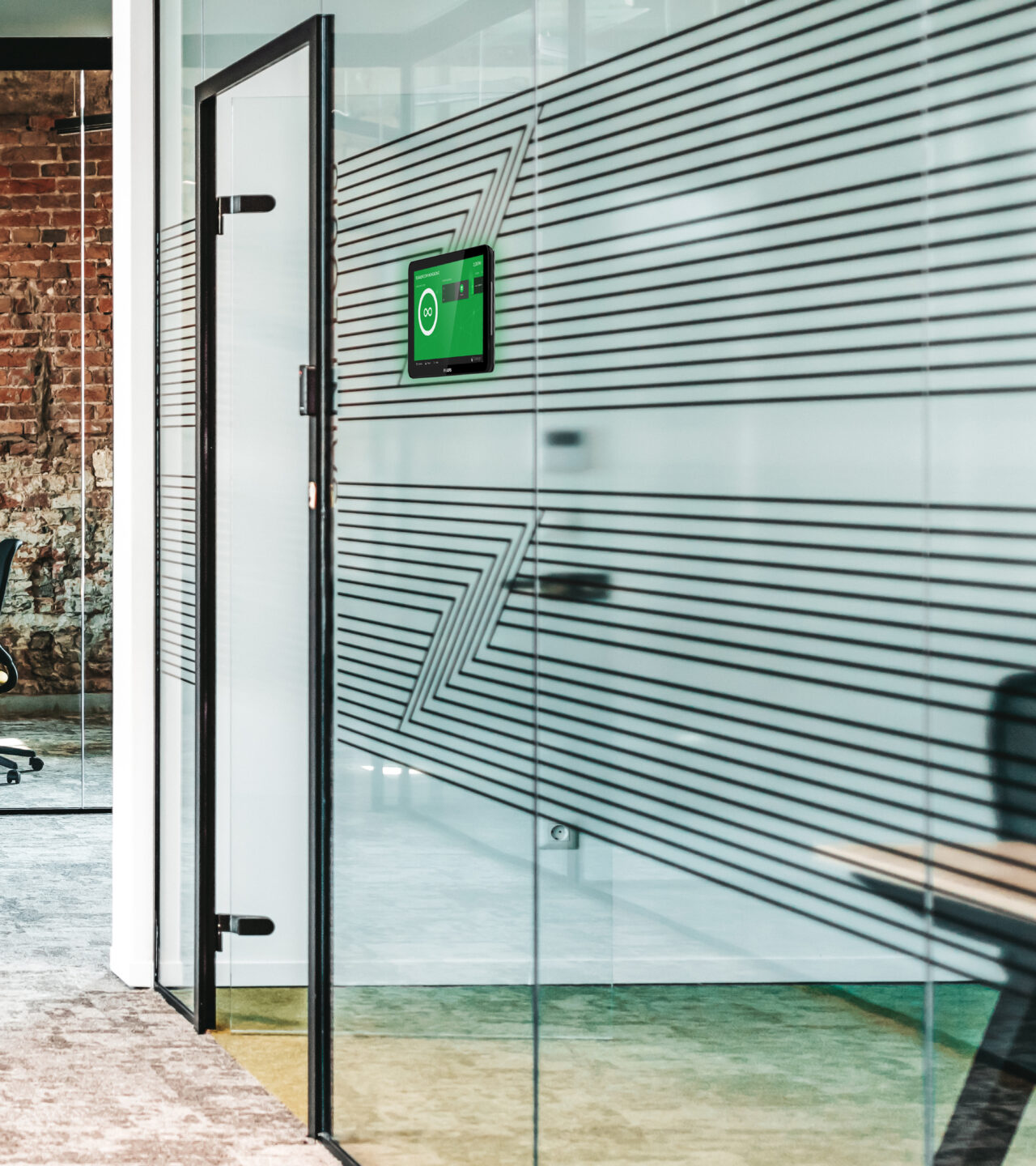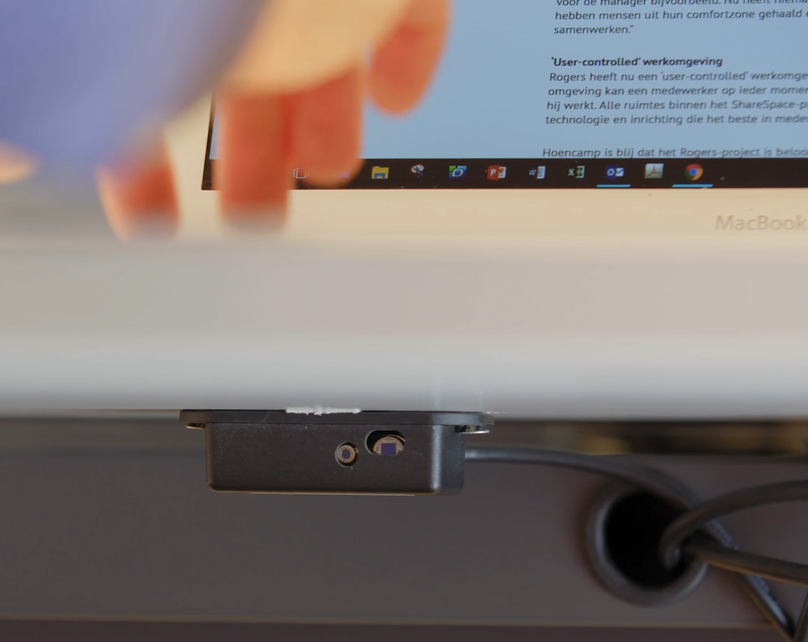
Sensors
Link your GoBright Solutions with sensors that can gather data regarding the occupancy and display availability.
- Gain 100% accurate data;
- Ensure efficient usage of the workplace;
- Improve your Smart Office's ease of use.
Link your GoBright Solutions with sensors that can gather data regarding the occupancy and display availability.
Sensors make office life a better experience in two ways: First, they detect when spaces are being used when they were not booked in advance, preventing others from mistakenly booking them. Second, they identify areas that were booked but are not being used, freeing them up for others. This provides accurate data that can be used to make data-driven decisions and optimise office utilisation.
GoBright offers two types of sensors: Room Sensors and Desk Sensors.
For GoBright Room Booking, we offer one type of sensor: The RFROS1 Sensor. This is a battery powered RF sensor that can be placed in meeting rooms, huddle spaces, booths, etc. When these detect motion within its given range, they transmit a signal to the GoBright Platform. The Platform will then display the room as ‘occupied’. After a period of time without movement, the sensors will notice that the space is no longer in use and will communicate to the Platform to release the room for other users to book.
Since the GoBright Room Sensor works on radiofrequency, it does not need Wi-Fi- or a PoE-connection. This makes for an easier hardware infrastructure in your office.
For GoBright Desk Booking, we offer four types of sensors. Which one you need to use, depends on your office’s set-up.
The RFDOS1 Sensor is a type of sensor that is placed under a desktop, and measures both motion and body heat. This is a sensor that needs a gateway. It communicates directly with the GoBright Platform.
The DOSC1 Sensor is a sensor that is paired with the GoBright Connect. It is not battery powered, as it gets its power supply from the Connect through a cable.
When you want to make use of the GoBright Interact, you generally do not need to add a sensor to your hardware collection, as the Interact has one already built in. This built-in sensor works on vibrations, and therefore notices it directly when a desk is being used.
In some instances, the built-in sensor of the Interact does not fit the office’s needs, for example when you have two different workspaces on the same desktop. Because the built-in sensor works on vibrations, it may communicate that both workspaces are occupied when only one of them is in use. In these types of situations, it is best to use an external sensor for the most accurate information. We are currently developing such a sensor, and expect it to launch in the second half of 2025.
Explore our FAQ’s to find quick answers to common queries about our products, solutions, and services.
Data-driven working is managing a workplace based on information that is acquired objectively. In data-driven workplaces, decisions of all aspects are made based on facts and data obtained from workplace analytics and statistics. An example of such a decision may be reducing the number of desks in response to data showing that these desks were not used effectively.
A data-driven workplace optimises decision-making by relying on factual data rather than opinions, ensuring the best, rational choices for office management. It promotes greater transparency and accountability, as reliable data helps employees make informed decisions in their daily tasks. Additionally, continuous data monitoring allows for ongoing improvements and innovation, as insights open up new possibilities for optimising the workplace.
Workplace analytics provide insights into workplace performance, occupancy rates, and space utilisation, offering both real-time and historical data to guide office optimisation. This data supports smart and efficient workplace design for employees and visitors alike, enabling predictive planning for future needs. By driving strategic business decisions, workplace analytics play a key role in creating data-driven offices.
Workplace occupancy measuring provides valuable insights into how office spaces are used, allowing for optimised space planning in a flexible working environment. By monitoring real-time occupancy, organisations can manage desk and room availability more effectively, while long-term data reveals underused areas and popular spaces, helping to reduce costs on energy, utilities, and even office space itself. Additionally, occupancy data enables sustainable choices, such as powering down unoccupied spaces, and supports continuous office innovation based on actual employee behaviour.
Workplace occupancy can be monitored effectively using Smart Office software and hardware, like desk and room sensors, to capture real-time occupancy data. Desk Booking and Room Booking tools provide an overview of the number of people in the office and allow for precise data collection, which is further enhanced by sensors to achieve nearly 100% accuracy. With solutions like GoBright, all booking and occupancy data is instantly visible in a single platform, enabling complete control and understanding of workspace usage.
Are you ready to take the next step? Request a demo to see our products in action or ask a question if you want to know more.


